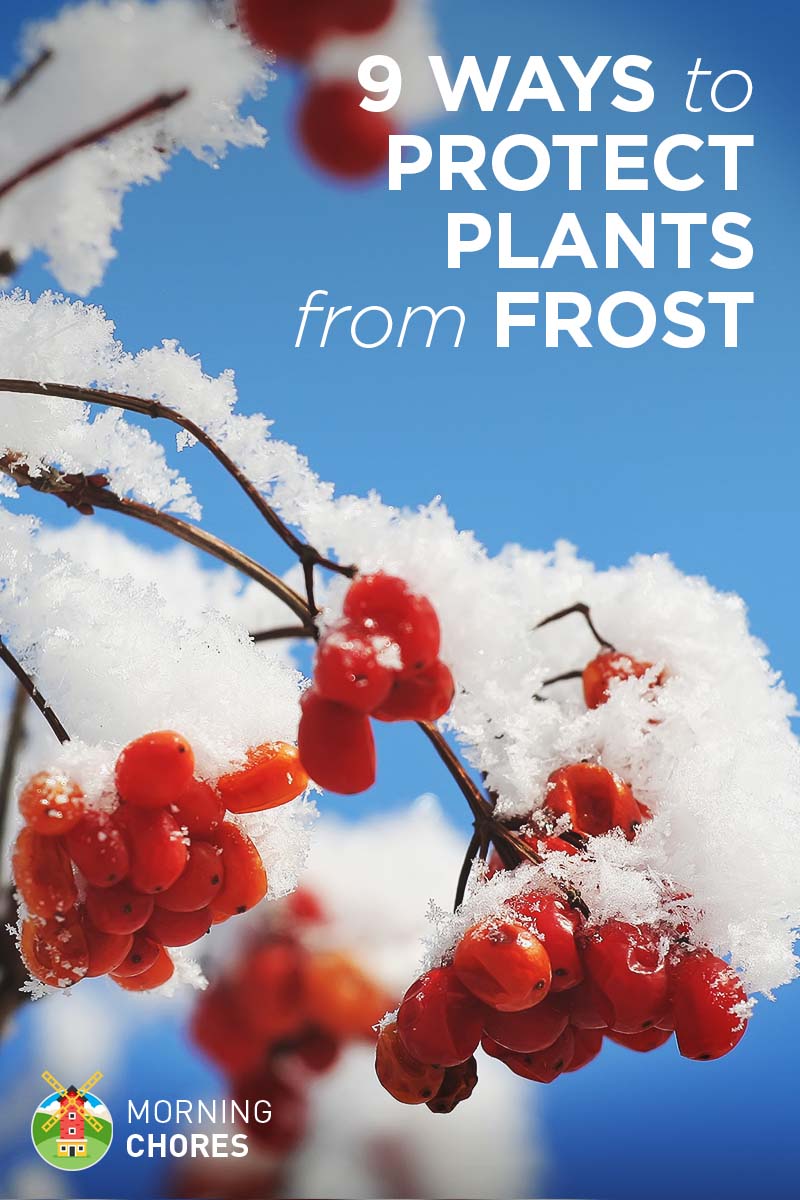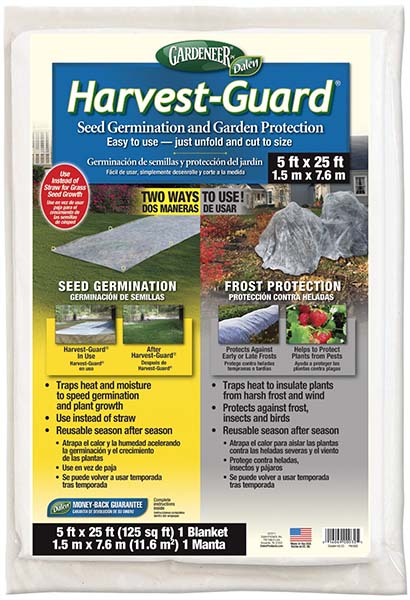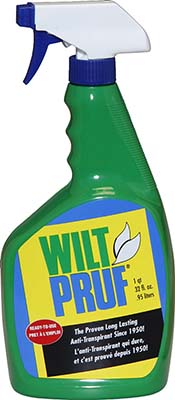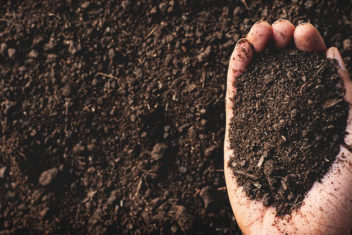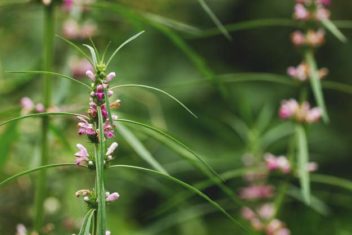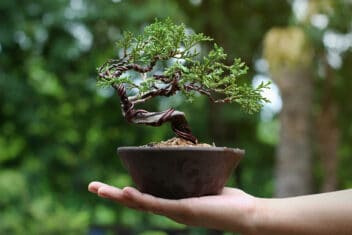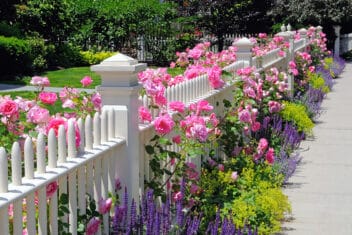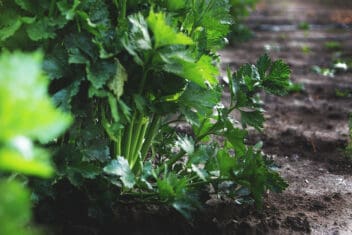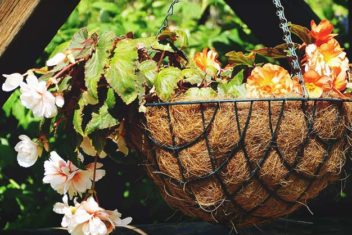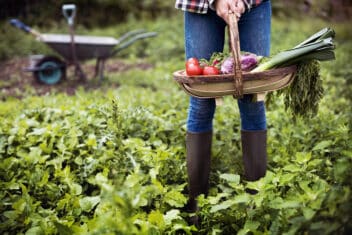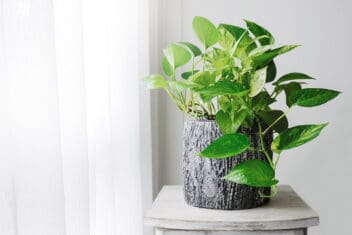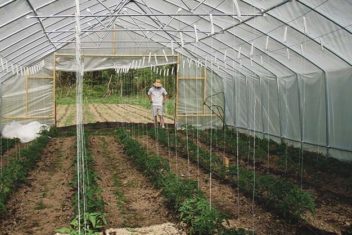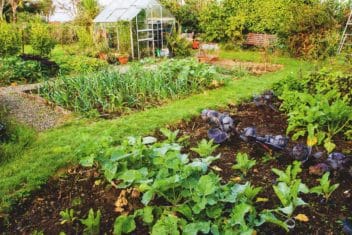Spring has sprung.
Plants are blooming. Life feels great.
Then out of nowhere, Mother Nature loses it, and BAM!
A cold snap.
You’ve already planted your garden. You’ve worked tirelessly to grow those little plants from seeds.
What can you do to save your garden and all of that hard work?
No fears. I’ve got 9 solutions to protect plants and will save those tender little plants and not wreck your fruitful garden dreams.
1. Bundle Them Up
What do we do as humans when the temperatures get cold? We bundle up, right?
Well, why should our plants be any different?
They need an extra layer to keep the warmth they have in and the frost off.
So when the frost is coming, be sure to cover up your tender plants. Bedsheets, plastic, straw, hay, mulch, leaves, and anything else you have on hand that will insulate will do the trick in protecting your plants.
Be sure that you uncover them first thing in the morning.
The reason for this is so the condensation that collects under the cloth will not refreeze and still kill your plants by freezing.
Giving your plant some clothes on a cold night can be the difference between a total bust and an amazing garden.
You can buy a multipurpose garden fabric here:
2. Smoke Your Plants
No, I don’t mean to roll your plants up and smoke them like tobacco.
I mean to either hope you have fog in the morning or build a fire only to let it smolder overnight.
When condensation lays on your plants, it can ultimately cause your plants to freeze to death.
Doesn’t that sound terrible?
To think that those little plants you worked so hard for can literally freeze to death.
But they can and will if you don’t cover them.
So why not use some wood that you didn’t burn this past winter?
All you have to do is start a fire and let it smoke and smolder. This allows a blanket of smoke to cover your plants instead of a blanket of condensation.
Fog works the same way. If you have fog during extremely cold temperatures, it will lay on your plants like a blanket and offer protection.
So before you ultimately do anything, check the weather. See if the fog is coming in with the cold.
If so, then you may not have to do anything to protect your plants.
If it isn’t, then start a fire for your plants.
Your garden will thank you.
3. Sprinkle Just A Twinkle
If you have small children and watch a lot of Mickey Mouse Clubhouse then you probably just busted out laughing.
You can see what I mean here.
If not, then don’t worry about it. It ultimately has nothing to do with homesteading.
Just know that your sprinkler can save your plants.
You are probably thinking, “What!?!”
But yes, it can. Your plants need a slight sprinkle flowing lightly over them all night.
This can be accomplished by a sprinkler system or a soaker hose system.
Either way, if the water is constantly touching the plants, then no ice is able to form. Therefore, your plants will be protected when you wake up in the morning.
The key to this working properly is a light amount of water or mist and also to be sure that the water is constant during freezing temperatures.
If the water is too heavy, it can ultimately cause freezing.
If the water stops, then it will freeze to the plant itself.
So just keeping a soaker hose running or light sprinkler going should be enough to protect your plants from freezing.
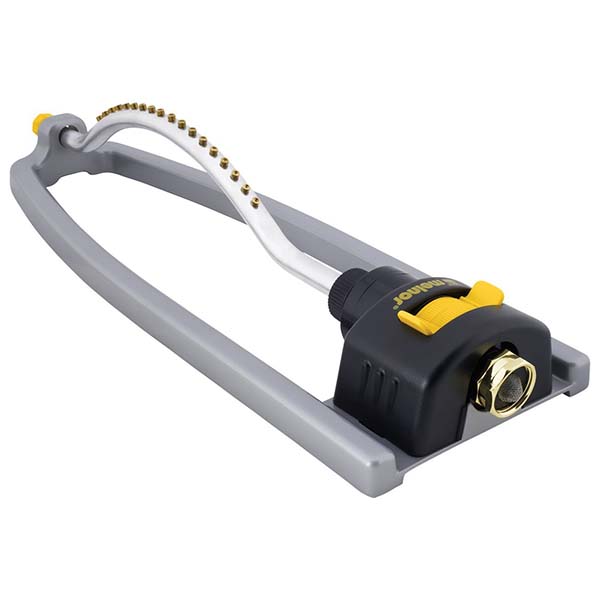
4. Keep The Home Fires Burning
This is a method I had never considered but seems to be a very common-sense suggestion.
If you are able to keep a fire stoked all night then do it.
All you have to do is build a fire and instead of letting it smolder (as I mentioned earlier) just keep it going.
The heat obviously keeps the plants from freezing.
Big farms and vineyards are known for using this option. They say it is costly because of fuel and labor.
However, if you are homesteading, you most likely use family to help you and burn your own wood. You can also use big heaters if you don’t want to have to keep a fire stoked all night.
They make large industrial heaters that are powered by propane and other fuels.
This would be a more expensive option, but for a large crop, it might be necessary if you don’t want to stay up all night.
It is a personal preference.
But if you are up for pulling an all-nighter, this is a great option for you and very cost-effective as well.
5. Give Your Plants A Shower
The night before the frost hits, water your plants.
This is different than the sprinkler option because it isn’t about keeping water flowing on the actual plant itself. This option is just about fully watering the dirt around the plants.
The reason is moist dirt holds more heat than dry dirt.
Therefore, if you don’t want your plants to freeze give them lots of water.
They will still be standing tall the next morning waiting on you.
6. Go Visit Your Local Nursery
No, I don’t mean to go ahead and submit to the frost and buy replacement plants.
I mean to buy a product they sell. It is call
It is call antitranspirant.
Its whole purpose is to keep frost from devouring your helpless plants.
All you have to do is give your plants a good spritz, and this product will seal in moisture.
They claim that if you spray it on your plants once, it will hold for up to three months.
Just be sure to read the individual packaging to ensure best results.
You can purchase antitranspirant here.
This does require you to buy an outside product but if you are wanting an easier method to keep your plants from freezing this could be it.
7. There Is Safety In Numbers
This is not just a reference to kids on a field trip.
It’s the truth for plants too.
If you have quite a few potted plants, all you have to do is cluster them up near your home.
Placing the plants together helps them hold in heat and be protected from outside frost.
Placing the plants near your home helps keep them protected from the wind which can increase the cold factor. A lot of people (especially urban homesteaders) plant a lot of their produce in pots.
This is a great option for them since all of their produce can be easily moved to any location desired.
8. Fence Them
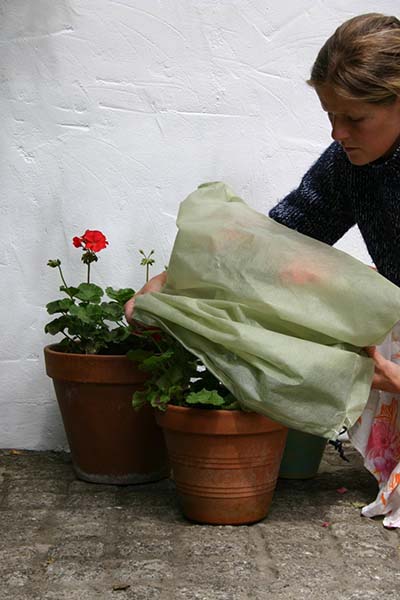
How does building a fence protect your plants?
It is quite ingenious if you ask me.
You do this by tying your plant up, so it is nice and tall. Then put a stake in the ground to secure it. After you tie and stake the plant up, then you wrap burlap around it like a fence.
When done adding the burlap, you then stuff the inside with mulch, leaves, or hay. This insulates the plant and keeps it from freezing.
This is a longer-term solution for a cold snap that lasts more than a night.
You can buy a frost protection ‘jacket’ for your plants here.
9. Throw Your Plants A Party

Okay, I seriously doubt anyone is going to be hanging out with their plants in a frost with party hats on their heads and blaring party music.
However, if you feel so inclined to do that there is no judgment here. I mean, you are talking to a homestead lady that talks to all of her animals every morning during feeding time.
Who am I to judge?
Back to what I was saying, what I was meaning is to use party lights to give warmth to your plants.
Have you ever seen those great rope lights that are used outside to decorate a deck during the summer?
What about Christmas lights that you use to decorate your tree?
I’d go so far as to say the decorative lights people use to decorate an outdoor bar or patio area would do the same thing.
Basically, if you have any decorative lights give them a shot. Depending upon size, it might take more or less of some kinds to get the same effect.
As long as they aren’t LED, they’ll do the trick.
You’d never dream that Christmas lights would give off enough heat to keep your plants from freezing, but they will.
You can string them up and down your plants. This option works great for trees as well.
Not only will you look festive on cold nights, but you’ll also awake to plants that have been kept warm all night.
Keeping your plants from freezing doesn’t have to be an impossible task.
Some of these options may seem a little tedious but if they save your plants, then the time spent is well worth it.
You know your individual garden size so use your judgment as to which would work best for your space.
Lastly, for better long-term protection, consider building a greenhouse, use a cold-frame, or use row-covers. Remember to use our handy guide to keep an eye on the first and last frost dates in your area.
